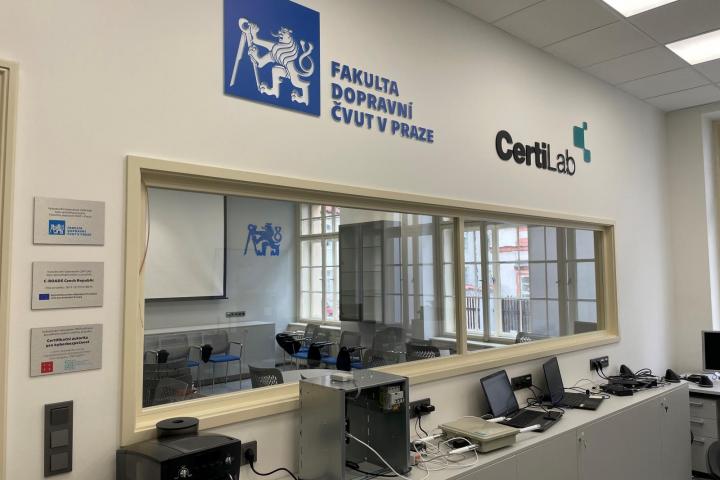TeskaLabs’ Technology SeaCat Unaffected by GNU C Library Security Vulnerability (CVE-2015-7547)
GNU C Library (GLibC) security flaw puts nearly all Linux machines and Linux-based IoT devices at risk
Prague and London - Feb 17, 2016 - TeskaLabs, a Prague and London based startup in application security, today affirmed that their core products are not exposed to the GLibC flaw, a highly critical security vulnerability.
Hackers or cyber criminals have a reason to celebrate today. The recent bug found in the GNU C library, a key component in most Linux distributions, put a large number of Linux-based applications vulnerable to attacks. How soon will hackers exploit this vulnerability? Patch your affected application immediately.
As described in a Google Security blog post, the flaw enables a cyber attacker to gain control over the application by injecting a specially crafted network packet into the application. Since the vulnerable function is commonly used by applications, the impact of this issue is comparable to Heartbleed, a major OpenSSL bug that affected at least 17% of all Internet HTTP servers.
Aside from a large group of Linux-based server applications, there is now a rapidly growing number of IoT devices that use Linux as their operating system and inherently GLibC. These IoT devices are open to exploitation with this mechanism. Attackers can execute their code on any of those devices. They can build large bot networks or steal data from industrial and personal IoT devices. While server-based systems are relatively easy to patch, IoT devices lack such feature and patching this flaw is hard or even impossible.
We have millions of exploitable IoT devices scattered around the world. And they will be exploited. This type of attack can and will be automated.
Unlike unprotected applications that use GLibC, SeaCat-enabled applications (IoT or mobile) are unaffected because they do not use the function called getaddrinfo() from GLibC component libresolv. Instead, they use their own implementation of this function which is a part of the SeaCat SDK.
“Buffer overflow type of attacks stemmed from this GLibC vulnerability is a serious issue,” said Jiri Kohout, TeskaLabs VP of Application Security. “GNU C Library is widely used, and it is difficult to know all the applications that are affected. Moreover, the situation is becoming more urgent because there are code that people can download and execute to exploit this vulnerability. If you can not immediately update this library, limit TCP DNS replies to 1024 bytes and drop UDP DNS packets bigger than 512 bytes.”
The anatomy of an attack

Comparison between unprotected app and app secured by SeaCat

SeaCat is the core technology behind SeaCat Mobile Secure Gateway and IoT/M2M Application Security Platform, which protect mobile, IoT/M2M applications, the communication channel and application backends.
If your application is SeaCat-enabled, you are immune from this vulnerability, and you don’t need to take any action. If you are unsure, please contact us immediately.
About TeskaLabs
TeskaLabs, a mobile and IoT application security provider, help enterprises build and operate their Mobile and IoT applications safely. TeskaLabs’ application security platform offers an active, up-to-date security protection via software, hardware, and cloud based products. Our technology is simple for application developers to implement, provides visibility to information security officers and saves time for IT Admins. For more information, visit https://www.teskalabs.com and follow @TeskaLabs on Twitter.
###
Media contact:
Vladimira Teskova
Mobile: +44 (0) 7548 674986 (UK)
Email: vladimira.teskova@teskalabs.com
Most Recent Articles
- A beginner-friendly intro to the Correlator for effective cybersecurity detection
- Inotify in ASAB Library
- From State Machine to Stateless Microservice
- Entangled ways of product development in the area of cybersecurity #3 - LogMan.io
- Entangled ways of product development in the area of cybersecurity #2 - BitSwan
You Might Be Interested in Reading These Articles
SeaCat Application Security Technology Is Not Impacted by the SWEET32 Issue (CVE-2016-2183)
The new vulnerability CVE-2016-2183 affects the 3DES block cipher in TLS and OpenVPN software. During an attack, attackers need to find a collision of block cipher initialization vector used at the beginning of the encrypted data stream and decrypt the traffic between the victim and the server.
Published on August 26, 2016

SeaCat PKI is now Generally Available
We are proud to announce the public launch of our latest product, the SeaCat PKI. SeaCat PKI is a state-of-the-art microservice that provides central cyber security certificate and key management for IoT, connected devices, and mobile applications.
Published on January 15, 2020

TeskaLabs SeaCat PKI for C-ITS delivered to CertiLab of Czech Technical University
TeskaLabs supplies the SeaCat PKI and the dedicated C-ITS security testing tool for CertiLab, laboratory for the development and testing of technologies for Cooperative Intelligent Transport Systems (C-ITS).
press
automotive
c-its
v2x
security
Published on July 07, 2021